
A HOW-TO & WHY-TO BURN INCENSE GUIDE

Can we talk about incense for a minute? What are they? Why use them? Do they accomplish anything other than masking a certain haze at college parties? Because I’m feeling like they have a role to play in the mass exodus from the over-processed lives we’ve found ourselves in. Stay with me as we dive into a how-to-use incense guide + a why-to-use incense proposal.
Have you noticed it too? Culture leaning steadily back toward more ancient living practices? As society has rushed through industrialization and digitization at breakneck speeds for a couple centuries, we’ve recently become enraptured with the idea of slower living—unraveling the helpful practices born from those eras of progress from the damaging ones that should be rewritten.
What if we grew more of our own food? What if we learned how to mend, instead of sending clothing to landfills? What if we increased our time outdoors and decreased our screen time? What if we made food from scratch before we bought processed foods? What if we hang dried laundry, said no to plastic more often and asked ourselves “how would my grandmother (great grandmother?) have done this?” as we collectively climb back toward more sustainable practices.
Incense falls into the Ancient Practices category, and once you know exactly what they are, what purposes they serve and how to select the right ones, they could easily replace things in your home like plug-in air fresheners, candles made with dangerous additives and airborne disinfectant sprays, while adding value to spiritual and mental health practices you already have in place.
WHAT IS INCENSE?
Simply put, incense is any plant matter that is burned for its spiritual properties or aromatherapeutic properties. The act of burning incense is believed to have originated in ancient Egypt, where there is evidence spiritual leaders used it to fumigate tombs. Incense have historically shown up in India and Southern Asia as early as 3300 BC. Many religions and spiritual practitioners have used incense throughout history from Buddhist monks to the gifts of frankincense and myrrh Jesus Christ received at his birth.

WHY USE INCENSE?
- To purify your space. Odor vaporizers and bacteria killers, burning incense has been shown in some studies to decrease the bacteria in the air by 94% after using medicinal smoke for 1 hour. Buddhist monks have been using incense to purify their spaces for thousands of years!
- To calm or focus your mind. The essential oils of plants like frankincense, peppermint, and citrus have been shown to improve focus and invigorate the mind. Alternatively, oils like lavender, sandalwood, and patchouli have been shown to have calming effects. Incense are often used to complement yoga or meditation practices to add a layer of focus or centeredness through aromatherapy.
- To reduce stress and anxiety. Our olfactory senses are one of our most direct links to our limbic system—the place in the brain that controls memory, emotions and how we learn. Burning incense with a particular scent can be utilized like any other aromatherapy to curb stress and decrease anxiety. Lavender is most well-known for this, but every neurosystem reacts differently—find out which works well for you!
INCENSE TYPES:
Incense comes in several forms, many of which you can find at Ten Thousand Villages, including:
Stick Incense (agarbatti): Most commonly known, the stick incense is made by wrapping a bamboo stick in tree resin and dipping it in essential oils. Once lit, you immediately extinguish the flame and leave the stick to smolder in an incense holder.
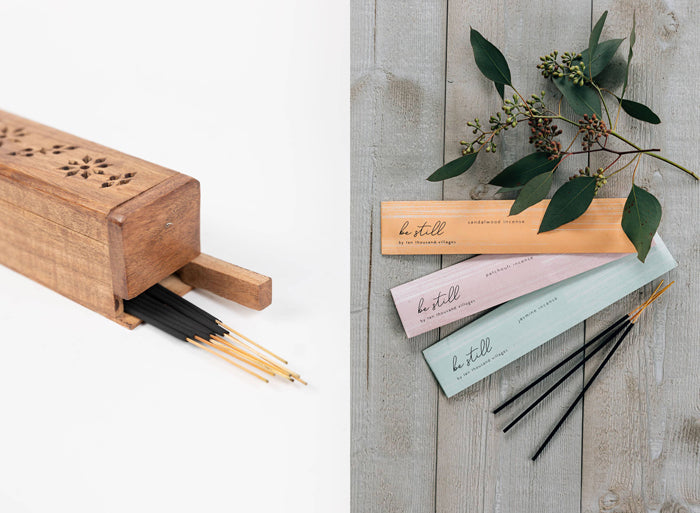
Cone: Made similarly to stick incense, the cones are hardened resin and oils and sometimes, wood dust. Cones work well for spiritual or meditative practices because you can follow the ember’s path, watching it slowly burn down around the cone.

Rope: Rope incense are popular in Nepal, made by hand rolling incense powder into lotka paper, then winding it into a rope. You can burn rope incense by piling ash on an incense plate, then lighting, allowing the ash to facilitate airflow around the rope. You can also light it standing in an incense holder like the Lotka Rope clay turtle holder.
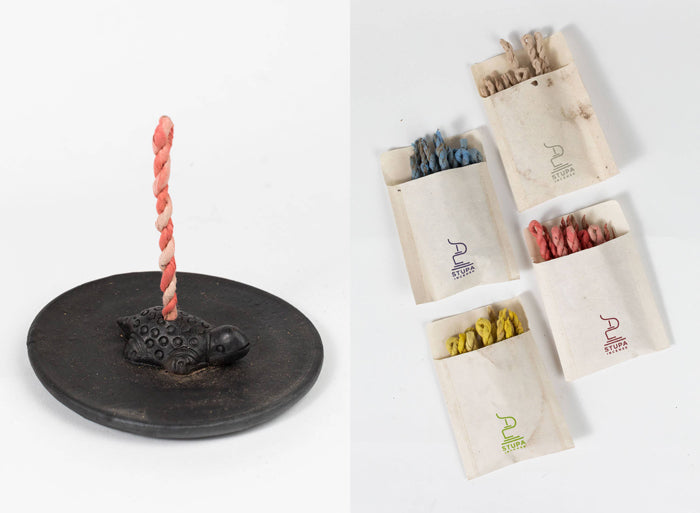
FOR THE BEGINNER:
If you’re new to incense burning, we recommend giving it a try with the Nature’s Garden Incense Set. With 15 fragrances to choose from, you can try out different varieties to learn which speak to your olfactory system the most. Some find tree fragrances the most grounding, for others, floral scents are the most calming, and others still find citrus scents most leveling. Discover what works best for you and your system. Pair the Nature’s Garden Incense Set with the Stone Incense and Candleholder for a safe burning time.

INCENSE DO’S AND DON’TS:

- Open a window during or after burning.
- Consider the size of your room. Only burn one stick at a time in smaller rooms. Large yoga studios, or homes with vaulted ceilings may be able to handle more than one stick at a time.
- Select all-natural incense that utilized sustainable plant harvesting techniques and ethical labor. Many incenses on the market use synthetic fragrances instead of natural resins or essential oils. These can cause health problems.

- Burn incense if you have any pre-existing respiratory conditions.
- Leave incense burning unattended.
- Use incense with synthetic or artificial properties (often marked “parfum” or “added fragrance” in the U.S.).
HOW ARE TEN THOUSAND VILLAGES’ INCENSE MADE?

Ten Thousand Villages is committed to seeing people and planet thrive. Therefore, we source incense from fair trade partners around the world who utilize only sustainably sourced ingredients like natural essential oils for fragrance, a tree resin natural adhesive and bamboo sticks. Want to discover more about some of our incense crafting partners + their commitment to and investment in fair trade?




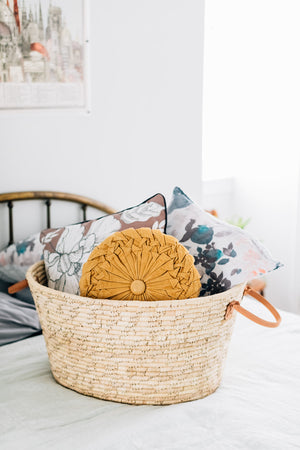


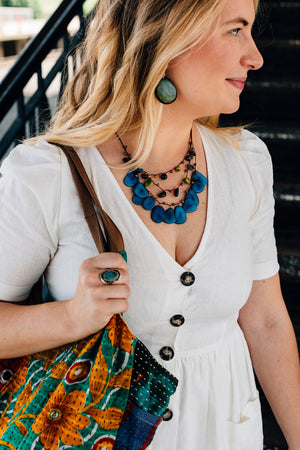
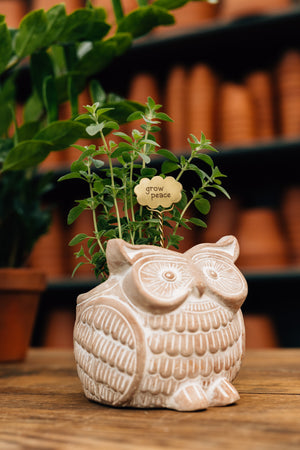

Leave a comment